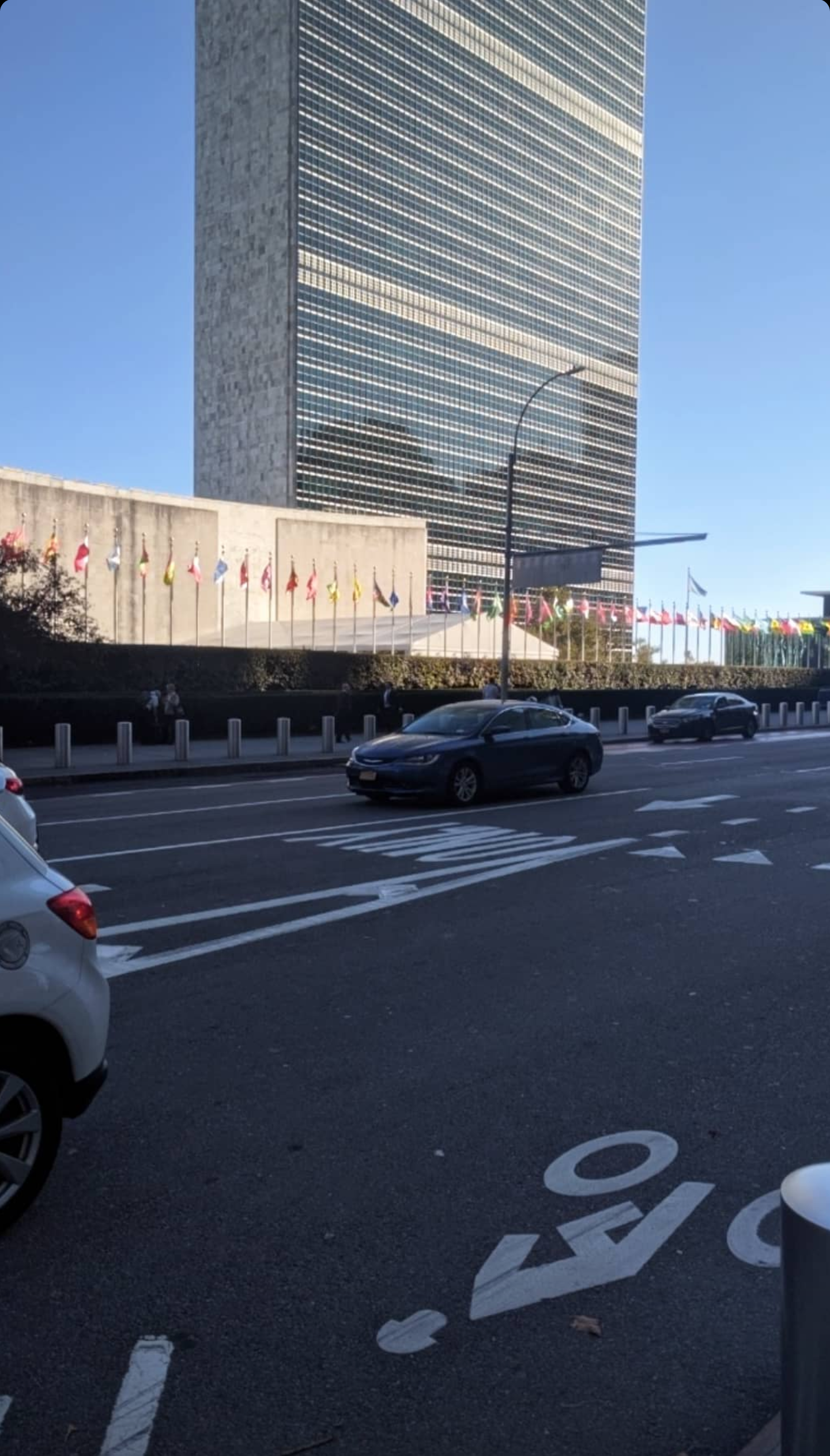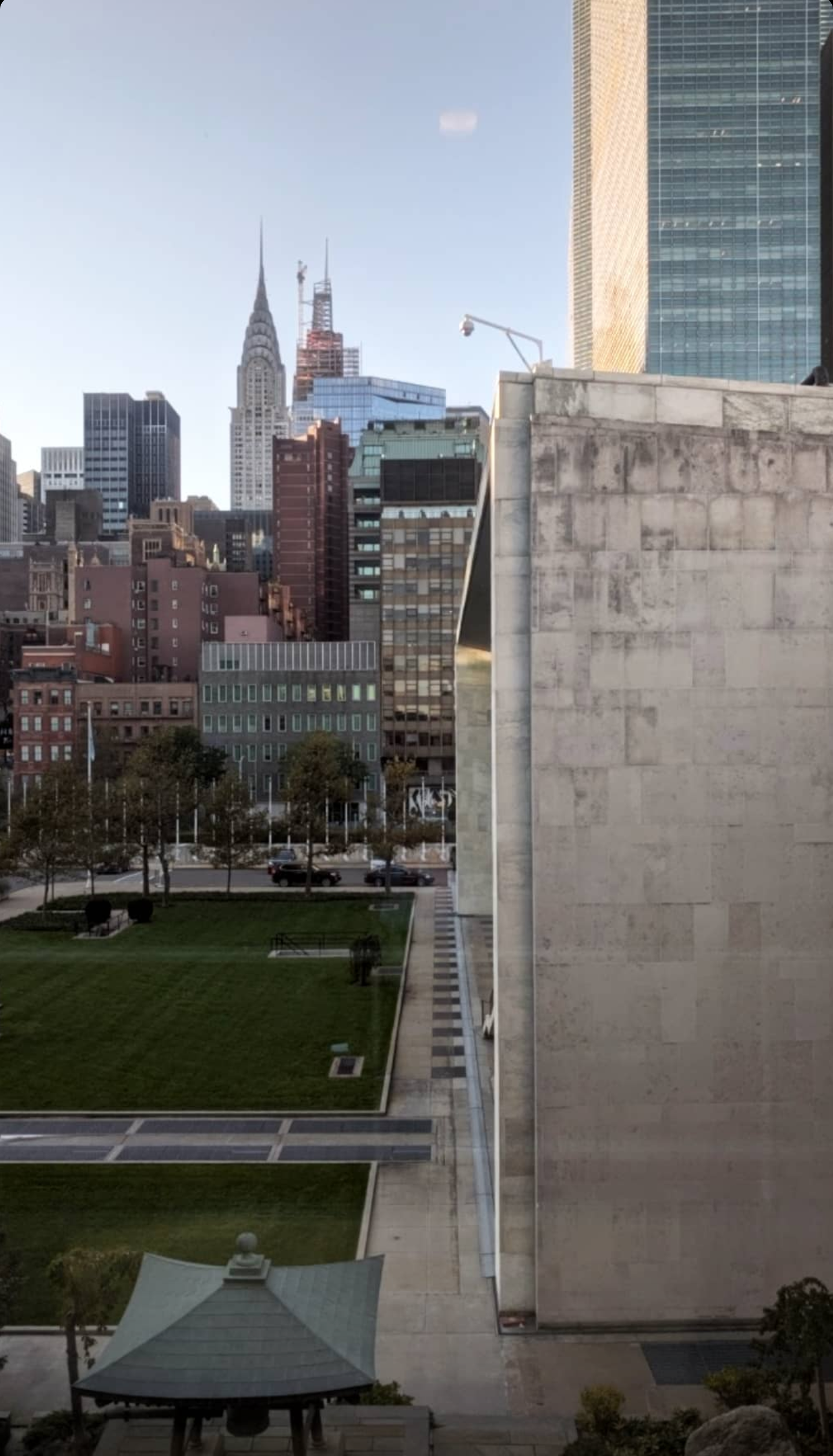The United Nations of New York City
"... Amid simplicity and order rationalism is born, but rationalism proves inadequate in any period of upheaval."
– Robert Venturi in Complexity and Contradictions in Architecture
Trying to go anywhere near the United Nations Headquarters in New York in the week of the Global Action Summit during the last week of September 2019 proved to be difficult. Very difficult. First Avenue from 39th to 49th Street were off limits to anyone not wearing a light blue tag with the UN logo around their neck and, usually a dark suit. Seeing entire blocks lined with NYPD and FDNY cars of various types and sizes, and checkpoints at every street was a major letdown for me, someone who worships at the church of the United Nations. An organization that I believed to be very open, to see it be so sheltered seemed unthinkable. Of course, one needs a pass or a tour ticket to get into the actual grounds of the UN, just as I had once needed a "family" sticker to get into the Vienna branch, having been conducted into the world of the United Nations at a young age (being the daughter of an employee of one of the agencies that falls under the network that is the UN), I admit I grew up in a bubble: an international school in Vienna, Austria with kids from all over the world who only teased each other slightly about their differences in those crucial teenage years, but in the end everyone graduated with at least two things: an International Baccalaureate diploma and an understanding and an appreciation for "otherness". Seeing all the black SUVs and sedans parked in all possible ways around the building complex, it seemed like such a lie... all of it. After all, this was a summit to address climate change... did everyone have to arrive in a car?
"The United Nations (UN) is a global organization, which aims to bring together governments of the world to promote international cooperation and maintain worldwide peace and order. (...) The primary function of the UN is to maintain international peace and security. " A website called World Atlas describes the organization on the World Wide Web like this in its brief entry. The UN was established to foster peace in the aftermath of the Second World War, out of the debris of the original organization called the League of Nations, which proved to be unsuccessful, though I fear the design of the current organisation is not very different than its predecessor and that is why it is proving to be inefficient in its endeavors. The plans and designs for an official headquarters came about a few months after the end of the war on 24th October 1945, and resulted in what we see today as a composite of three buildings that sit on Manhattan's East Side, just off First Avenue and overlooking the East River. One of the buildings, the iconic 39-storey block that can be seen from across the river, is a structure that houses The Secretariat. It adjoins the Conference building, where the General Assembly Hall and the Security Council Chamber are located and, along with a third building, the library—all are examples of "the International Style" in architecture. But just how international is it really? What makes such bland architecture international? If the headquarters were trying to be a fresh start after WWII why was blandness desired? Or was it just a peace of mind, is that what the buildings represent? To quote Robert Venturi "Mies refers to a need to 'create order out of the desperate confusion of our time' ... Should we not resist bemoaning confusion? Should we not look for meaning in the complexities and contradictions of our times and ackowledge the limitations of systems?" in Complexity and Contradictions in Architecture.
The site itself is No Man's Land—an example of extraterritoriality, even though the building sits on Manhattan island, the grounds behind the gates do not fall under the jurisdiction of the U.S. law. The UN has its own laws, though it also follows most US state and federal laws and does not provide immunity to those who break them. Six official languages (English, Arabic, Chinese, French, Russian and Spanish) represent the 193 countries that are members of the organisation. In my search for why the headquarters are actually situated in New York I landed on the conclusion that what ended up being the final deciding factor was money, in a way. The land, on which the building complex sits was donated by the Rockerfeller family. I feel the headquarters is almost the exact opposite of Times Square on the Manhattan island... or really most streets in New York. The city is the united nations, without the capitalization. It is not an organization, but you can hear so many different languages, you can see so much diversity almost anywhere you look. It is perhaps a noble gesture that the entrance to the grounds of the UN HQ is lined with the 193 flags of all the UN member states and the UN flag. But is that enough?
Is the UN just a myth? Does it actually function? And if it does, should it not uphold to the notions it tries to preach? I still abide by the notion that a higher office (on planet Earth) of any kind should command a certain amount of respect, although in 2019 it seems like I am the only one left who does not just shrug her shoulders at the sight of ridiculous displays of what can only be called absurdity. Looking at the Climate Summit it does seem almost surreal that the sixteen year old Greta Thumberg was the one making the most sense and the biggest impact.
1 October, 2019


For more see Medium ...